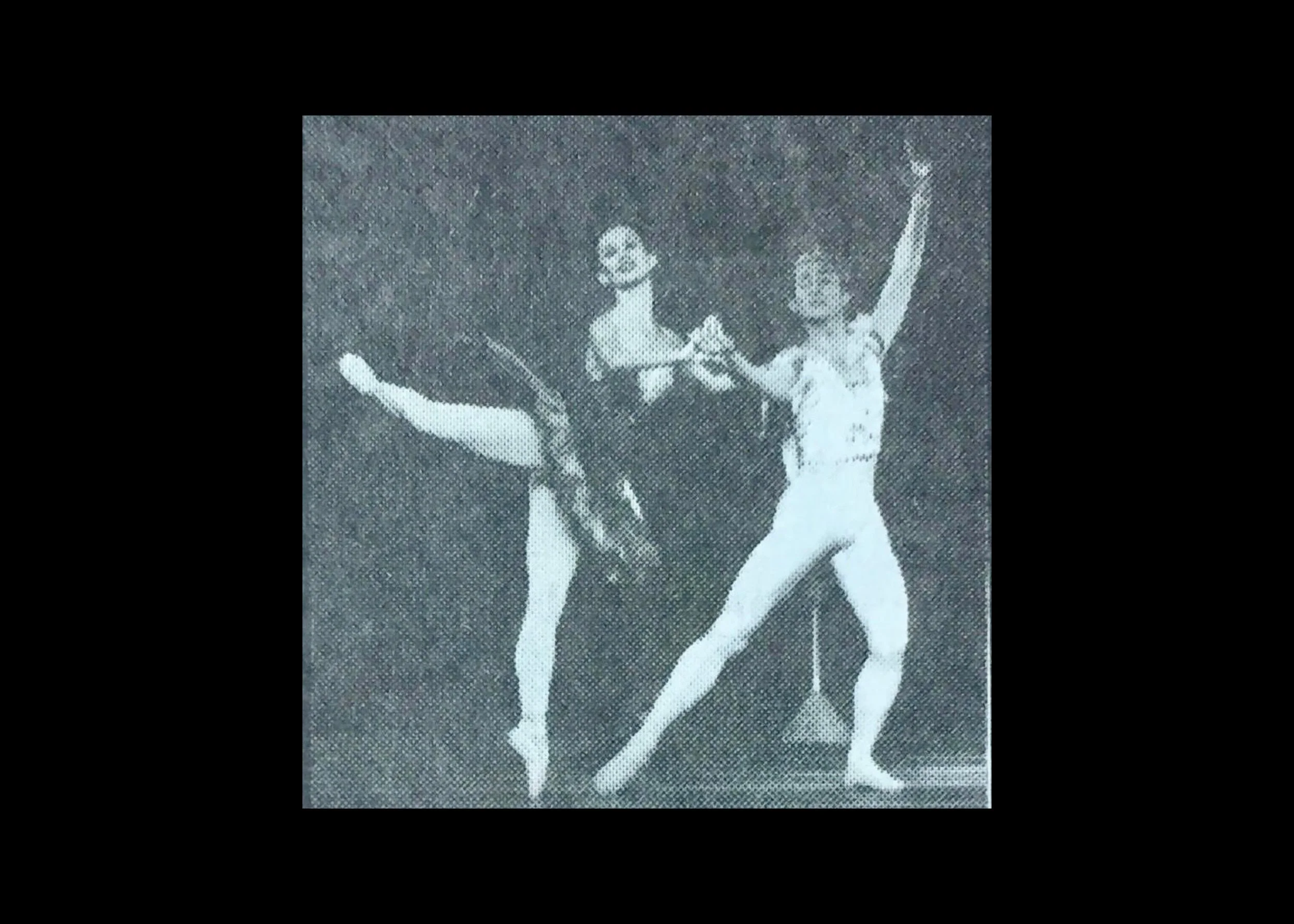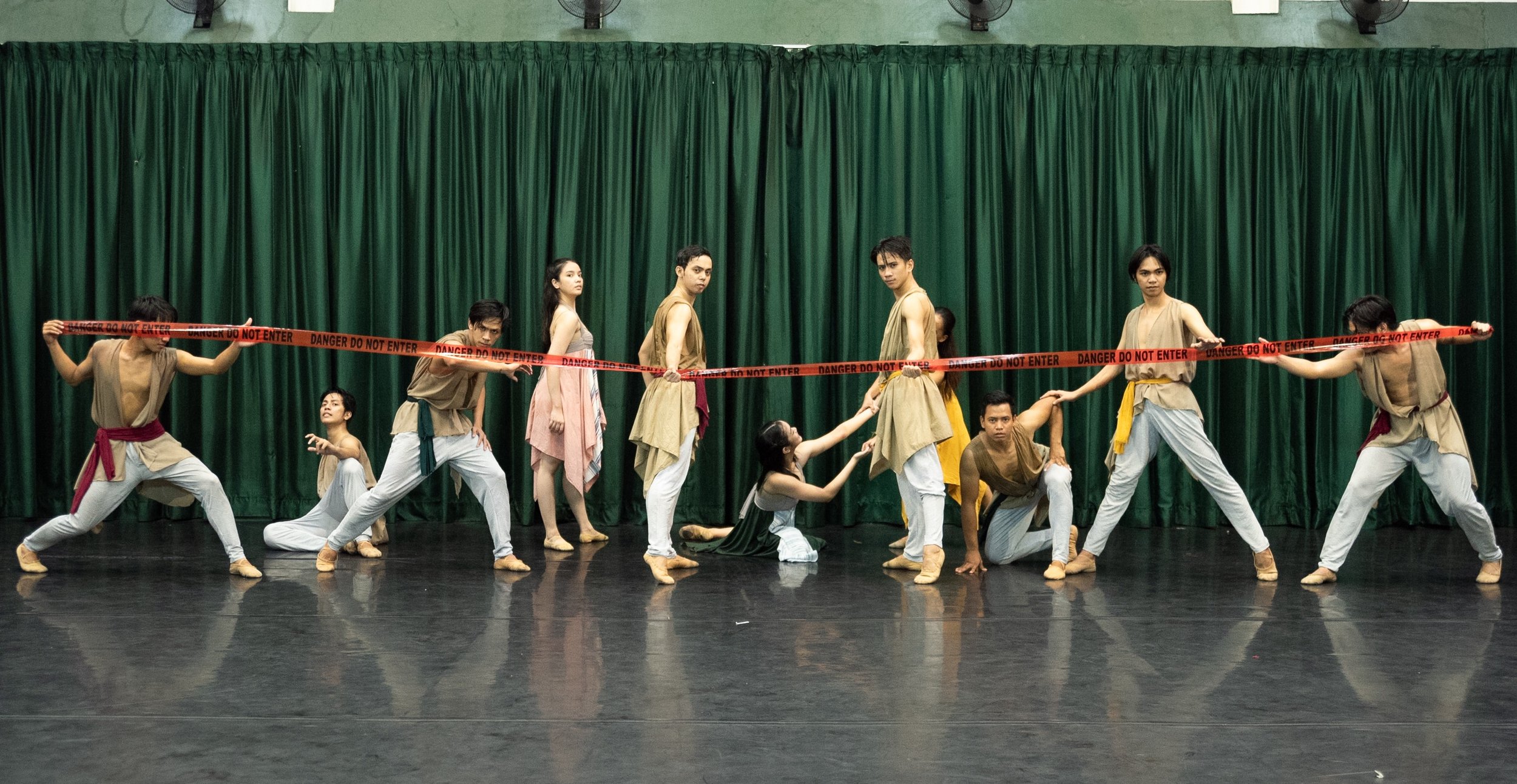Choreography in Focus: Border by Gerardo Francisco
Gerardo Francisco’s Border – which won group gold in the 2021 Asian Grand Prix Finals – depicts the plight of refugees in a frantic search for a better life. Video by MarBi Photography
For Gerardo “Geri” Francisco Jr., inspiration for a choreography can come from practically anywhere. As Ballet Manila’s resident choreographer, he has transformed a wealth of ideas – a mother’s love for her child, a hero’s passion for writing and a contract worker’s woes, to name just a few – into short dance compositions. The resulting piece (in this case – Ili-ili, Ka Andres, and OFW, respectively) often resonates with the audience as each one is an emotion-filled exploration of human connection and ideals.
The dancers of Gerardo Francisco’s Border must convey the desperation felt by their characters as they flee their homeland.
The same holds true for one of his recent works entitled Border. The gold winner for senior group contemporary in the 2021 Asian Grand Prix video competition, Border is a gripping look at the plight of refugees. The notion of people forced to flee their homeland because of strife and their frantic search for a safer place is something that the choreographer had actually delved into before.
In 2018, Geri created Fuga, a competition piece for Nicole Barroso and Joshua Encisco which drew raves at the USA Ballet Competition that year. As the pair who must escape to freedom, the dancers gave their performance an urgency and energy that perfectly captured the choreography’s theme.
With Border, Geri expands on the subject and this time with eleven dancers who must echo that same desperation felt by their characters as they look for a sanctuary.
The eleven who performed Border were: Jessa Balote, Jefferson Balute, Rodney Catubay, John Carl Concepcion, Alvin Dictado, Marinette Franco, Rosanne Melencio, Jamil Montibon, Sean Pelegrin, Raymond Salcedo and Brian Sevilla.
Border was a challenge to put together amid the prevailing pandemic restrictions, with studio rehearsals kept to a minimum. The choreography took shape and was relayed to the dancers mostly through online sessions.
As with any choreography, Geri assessed the capability and personality of each dancer before assigning the steps for them to do. “Kailangan bumagay sa kanila (It has to suit them) or else they won’t be able to give justice to the choreography,” he explains.
The capability and personality of each dancer needed to be assessed before assigning the steps for them to do.
In using a particular music, he thinks of the appropriate attack or approach in his choreography. Will it be slow, fast, upbeat? “This is where you will use your imagination. How are you going to execute ‘yung tumatakbo sila in a unique way – not the usual run on stage, followed by the movements.”
How they will dance has to be appropriate to the music and the mood, Geri points out. Then he also has to think of a formation which is logical and fits into the whole choreography. Based on what he sees, he does a final tweaking.
“If we had more time, maybe I will change the flow of the choreography, the steps and approach of the movement,” he muses of Border.
But given the limitations, Geri did the best he could do. He hopes that in Border, he was able to offer a peek into the story of each refugee and ultimately, share the collective hope that they are headed for something better.






